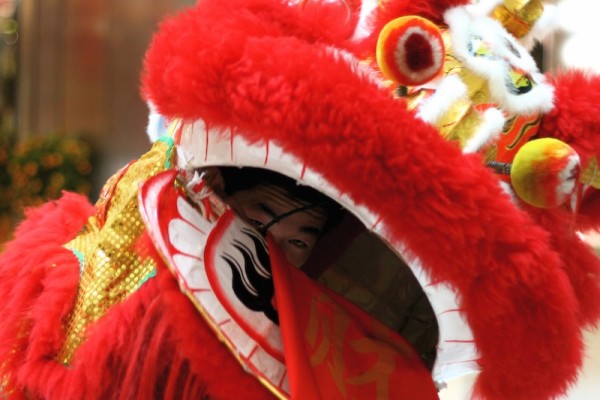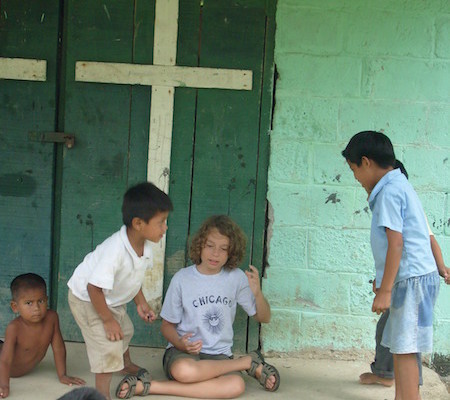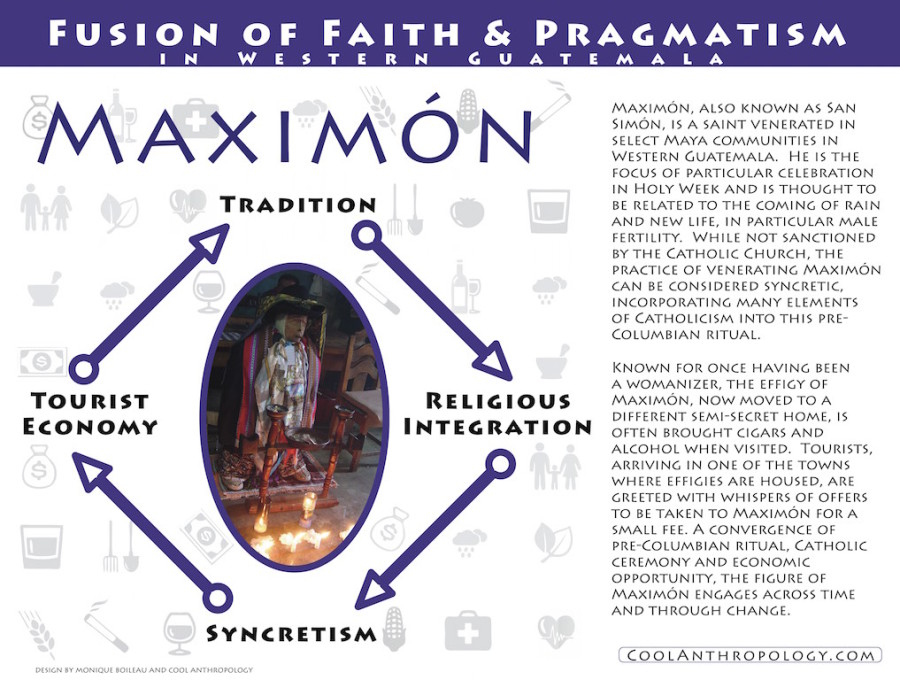Religion is our first stop on the development road, being the impetus for many of the first ideas of “progress.” Here, we will consider how changing religious practices shape everyday lives with the cultural norms they create and reinforce.
Religion has historically been the first stop on the development road, with the offer of salvation and practical assistance reaching deep into remote parts of the world. While incorporating the many facets of Christianity into religious practice has not always meant the abandonment of pre-missionary religious practices and sites, it has had a strong impact on daily lives, not least of which is providing an inroad for other development forces. While syncretism is a well-documented way of incorporating the new into old, changing religious practice is far-reaching. For example, in a Maya village in Belize, burning incense when planting corn (a Maya practice allowed by the Catholic church) was found to be a predictor of overall wellness among community members (Baines 2012). The social aspects, and healing aspects, of religious rituals have been noted by scholars working in many parts of the world (Dejarlais 1992). Religion is far more than a system of belief- it is a way of being. The smells and sights- the sensory experience of religious practice, evokes memory and heritage and, it follows, identity. Stripping religious practice, therefore, can have a far-reaching impact on identity. Changes in religion do not impact identity in a homogenous way. Different churches provide different norms and rules of behavior. Many newer Evangelical churches forbid the use of incense, as well as traditional musical instruments, promoting the purchase of guitars and amplifiers- a the cost of both heritage and economic resources. Others positively tackle social problems, forbidding the use of alcohol, and are fundamental in promoting positive family interactions as a result. While the presence of many churches gives choice to communities, it also creates divisions. Summarizing the history of religious tensions is beyond the scope of this project, however, it is worth noting that in a changing world, divided allegiances are significant. Differing opinions about wealth disparities or the sale of sacred sites and lands are just two examples of how these allegiances might manifest themselves. With thousands of years of history around the world, the influence of religious forces runs deep- defining individuals and communities as they construct heritage identities.
Considerations
- When was your community established and how does the community trace their [religious] history?
- How many religious groups, churches, etc. are present in the community and / or how do people express their religion in the community?
- How does religion influence the community in terms of daily practices, interpersonal relationships, politics, etc.?
- Is there conflict between community members of different religions?
- How do people in the community talk about religious changes?
- Are there “traditional” religious practices practiced in the community?
- How are traditional religious practices perceived by different community members?
- What do traditional religious practices entail?

Artwork care of Nick Paliughi
This is an ongoing project and a continuous conversation. Please add your voice by joining the discussion at the end of this page and/or recording your contribution and contacting us to have your submission added to the installation.
Share this:
- Click to print (Opens in new window)
- Click to email a link to a friend (Opens in new window)
- Click to share on Facebook (Opens in new window)
- Click to share on Twitter (Opens in new window)
- Click to share on LinkedIn (Opens in new window)
- Click to share on Pinterest (Opens in new window)
- Click to share on Tumblr (Opens in new window)
- Click to share on Reddit (Opens in new window)
- Click to share on Pocket (Opens in new window)



